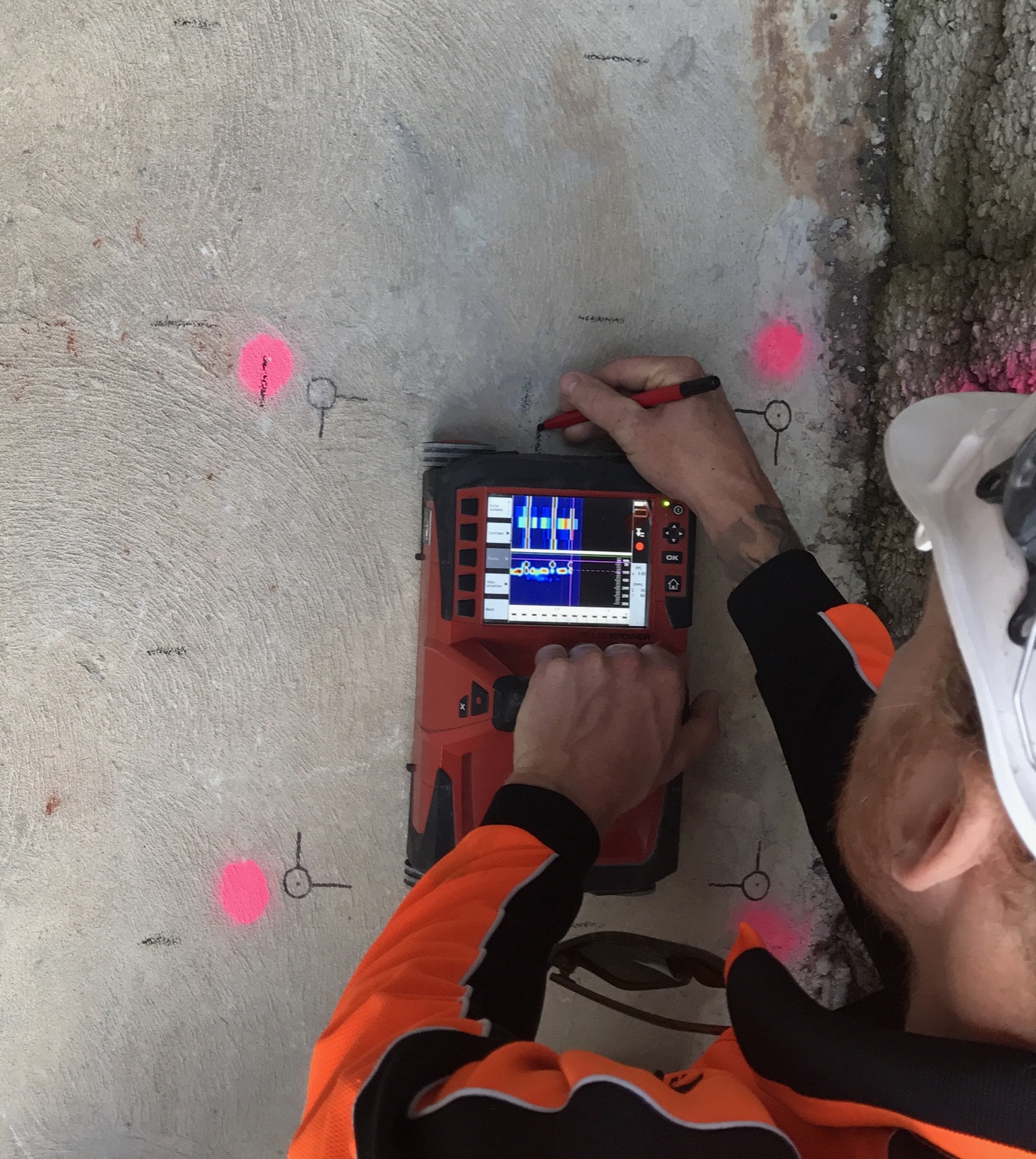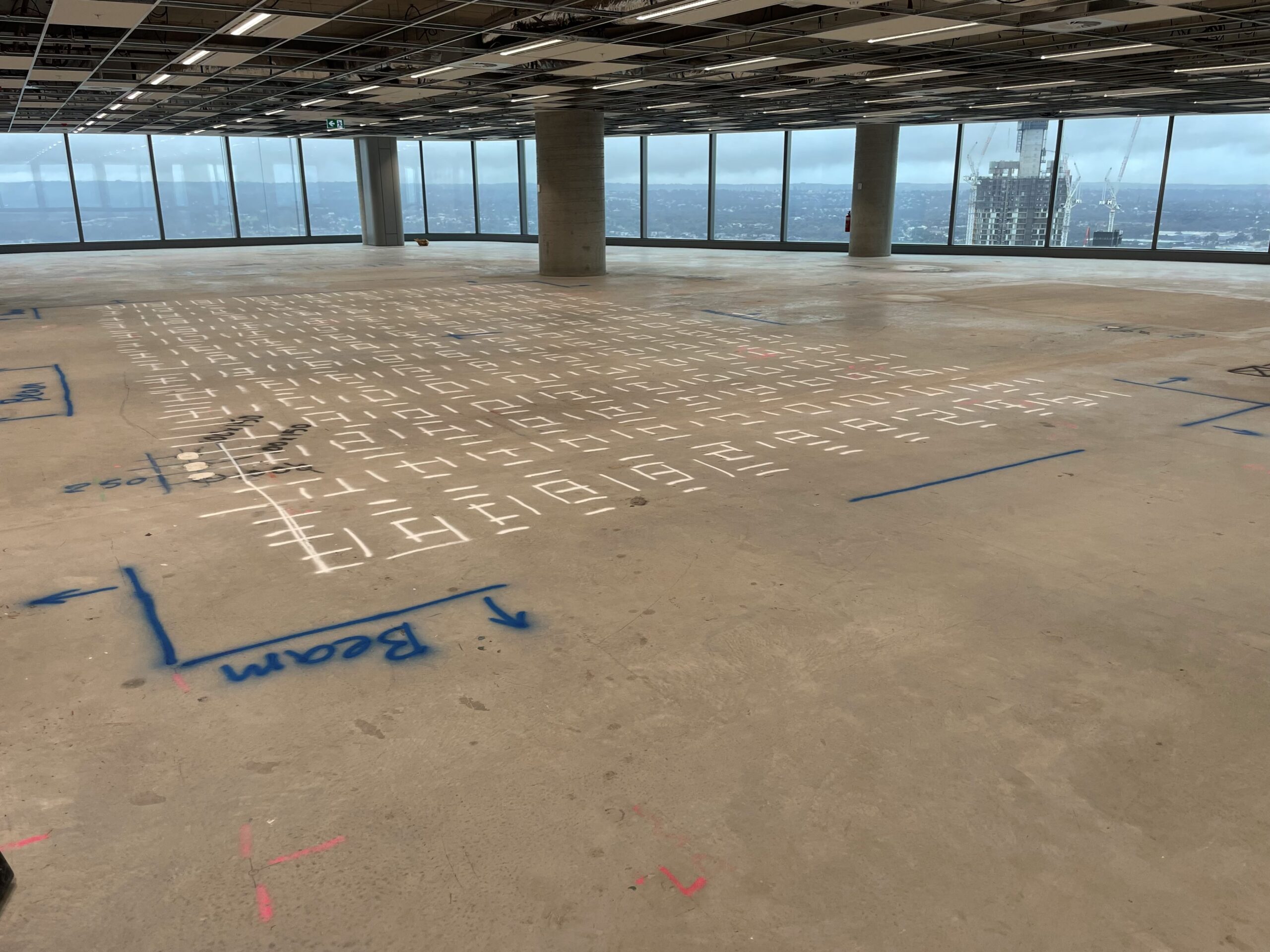What is concrete scanning?
Know what to expect before you start your construction project. Concrete scanning lets you determine what lies within a concrete structure before cutting takes place - so you can identify any hidden obstacles and prevent damage to critical objects.
Concrete scanning - also known as slab scanning or ground penetrating radar (GPR) scanning - involves the use of a specialised scanning device that utilises electromagnetic waves to detect variations within the materials. These variations can then be decoded to establish what materials and objects are present within the concrete structure.
From determining concrete thickness to identifying targets, concrete scanning provides you with comprehensive data, allowing you to make informed decisions on where penetration will be safest and most effective.
By allowing you to avoid disturbance or damage to objects within the concrete structure, concrete scanning can provide you with huge cost-saving benefits in areas such as construction, engineering and maintenance.


What is concrete scanning used for?
Drawing on GPR technology, concrete scanning is used to scan the surface of a concrete structure to provide a detailed analysis of what it contains - including hidden or buried objects which you may not want to disturb or damage.
Highly advantageous for a wide range of construction projects, concrete scanning can be used to:
- Establish the location of reinforcement bars, steel beams and post-tension cables
- Determine the thickness of concrete slabs
- Ensure the safety of subsequent concrete cutting work
- Produce comprehensive reports for analysis
- Locate key elements within concrete structures, e.g. electrical conduits, fibre optic cables and voids.
Benefits of concrete scanning
A fast, efficient and cost-effective way to identify and locate objects within concrete structures, concrete scanning offers an array of benefits to any construction project.
From determining where key objects are positioned to enabling a safe and strategic cutting operation, concrete scanning can help reduce costs, time and risk.
- Prevent disturbance to critical objects: By enabling the identification of buried or hidden objects prior to cutting, concrete scanning avoids damaging or disturbing critical elements during the works.
- Rapidly locate key services: Concrete scanning via GPR enables the quick location of important services such as post-tension cables, reinforcement bars, fibre optic cables, electrical conduits and other voids.
- Ensure cutting safety: Avoid the dangers of issues such as striking a live service or hitting an unidentified hazard; concrete scanning lets you eliminate these risks and cut with safety.
- Save time and costs: By reducing the risk of costly downtime or project setbacks as a result of damage to structures or services, concrete scanning can help to prevent major expense down the line.
Why choose J&J Concrete Cutting for your concrete scanning needs?
To ensure your project runs smoothly, preparation is key. With extensive experience in providing in-depth concrete scanning services to a wide range of clients, J&J Concrete Cutting can help you reduce your risk and avoid costly setbacks.
We’ll work closely with you at every stage, ensuring each element of your project is undertaken to the highest standard, from start to finish.
By combining industry expertise with exceptional customer service, you can relax knowing you’re in the best hands with J&J on your side!










